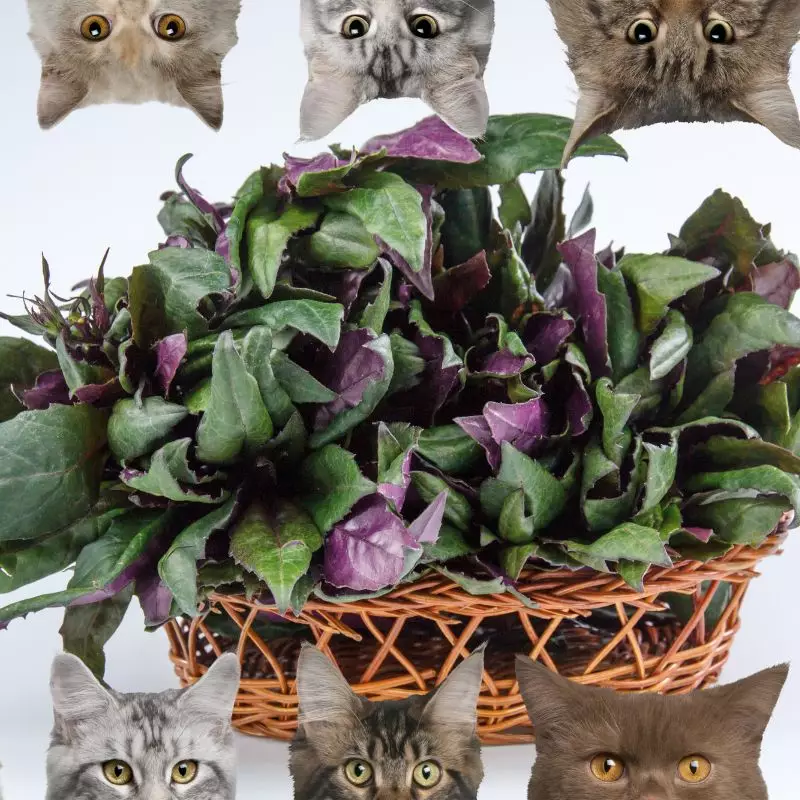No, the Purple Passion Vine is not toxic to cats.
This article has been meticulously crafted in collaboration with a team of experienced DVMs (doctors of veterinary medicine). With their insights, we aim to deliver accurate and up-to-date information about the potential risks associated with various plants, particularly focusing on the Purple Passion Vine in this context. To further ensure reliability, we have consulted high-authority sources such as the ASPCA (American Society for the Prevention of Cruelty to Animals) and PetMD.
Notably, the ASPCA lists the Purple Passion Vine among plants that are non-toxic to cats, dogs, and horses. Your feline friend can, therefore, safely touch, lick, or nibble on it without concern.
Can Cats Eat Purple Passion Vine?

The quick answer is yes. Cats can consume small amounts of purple passion vine. However, excessive consumption of this plant, or any other plant, may cause indigestion in cats.
Cats’ stomachs are not designed to metabolize plant materials because they are carnivorous. As a result, they frequently experience gastrointestinal issues and symptoms such as vomiting and diarrhea.
Certain plants may also cause allergic reactions in some cats. As a result, the effects can vary from case to case. The best thing you can do is keep your cat away from any plant, toxic or not.
What is Purple Passion Vine?

Scientifically called Gynura aurantiaca, the purple passion vine is a herbaceous Asteraceae evergreen plant that is widely cultivated as a houseplant. It looks best in a hanging basket and is distinguished by its unusual velvety purple leaves and stems. The best foliage color will be achieved with bright, indirect light and protection from the afternoon sun.
In the fall, clusters of tiny orange-yellow flowers appear, but may not appear in low-light conditions. Purple passion vine has an unpleasant odor and can be messy, so it is frequently removed. This plant has weak stems and a sprawling growth habit; pinching back stems may promote bushier growth and reduce legginess.
Other common names of purple passion vine are velvet plant, purple velvet plant, and royal velvet plant.
Keeping Cats Away From Purple Passion Vine

Your plants’ location is a crucial aspect of your plan for keeping your cat away from them. A hanging basket is an excellent place to store your plants. Plants placed in high places without anything nearby for your cat to climb on will solve the problem. You might see her perched beneath the plant, gazing at the leaves and vines. Your plants, on the other hand, will be safe from her grasp if there is no way for them to climb up.
You may also try making your soil prickly for cats to walk on. Spread mesh bags from onions or potatoes in the garden and anchors them with twigs or stakes. If necessary, widen the hole around your budding plants. Keep tabs on any plastic materials you place in the garden to prevent them from blowing away and becoming litter.
Plants to Avoid For Your Cats
If you are a cat owner and unsure if the plants growing in your yard are harmful to your cats, check out this list of toxic plants for cats. You can also check our list of non-toxic plants for cats.





